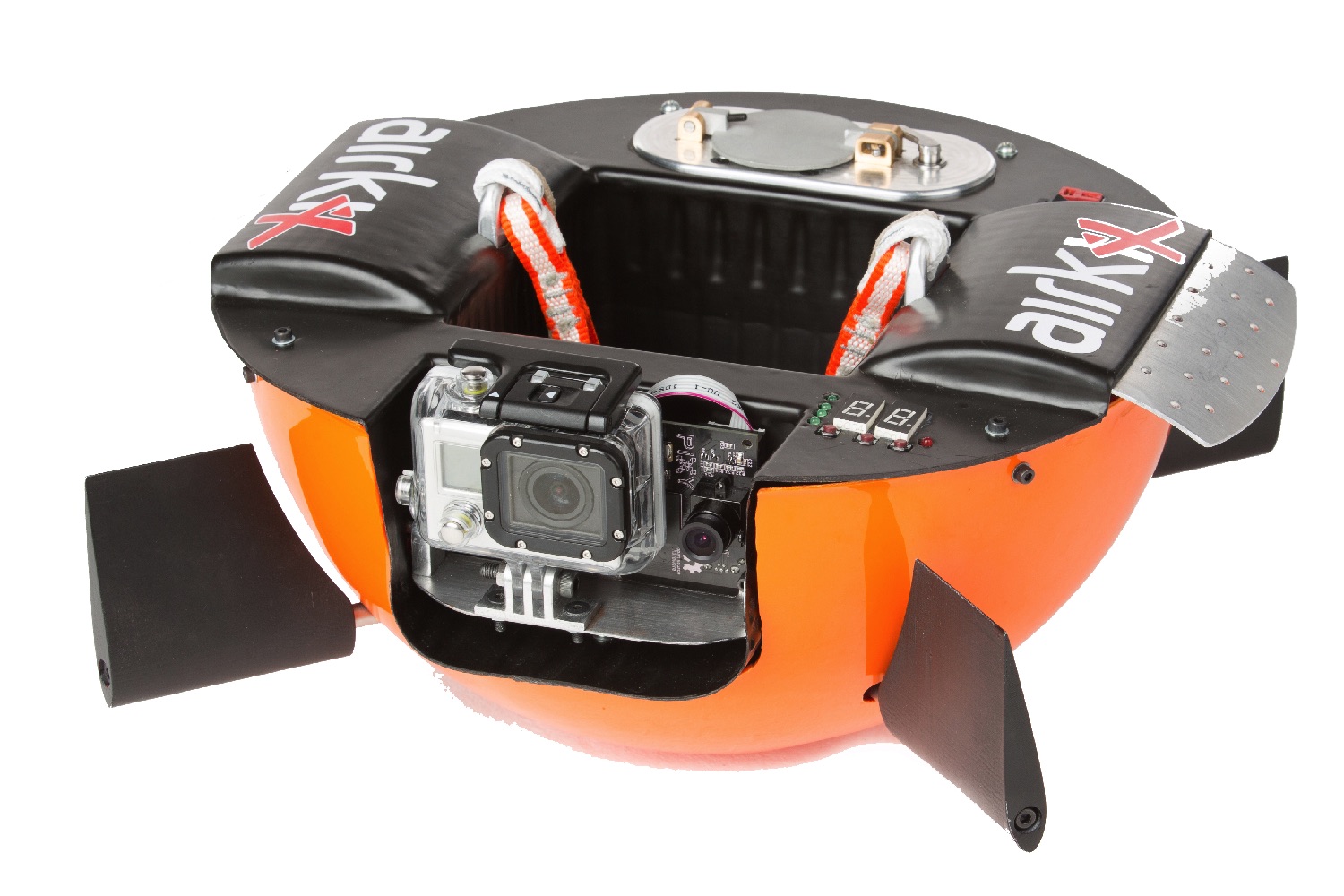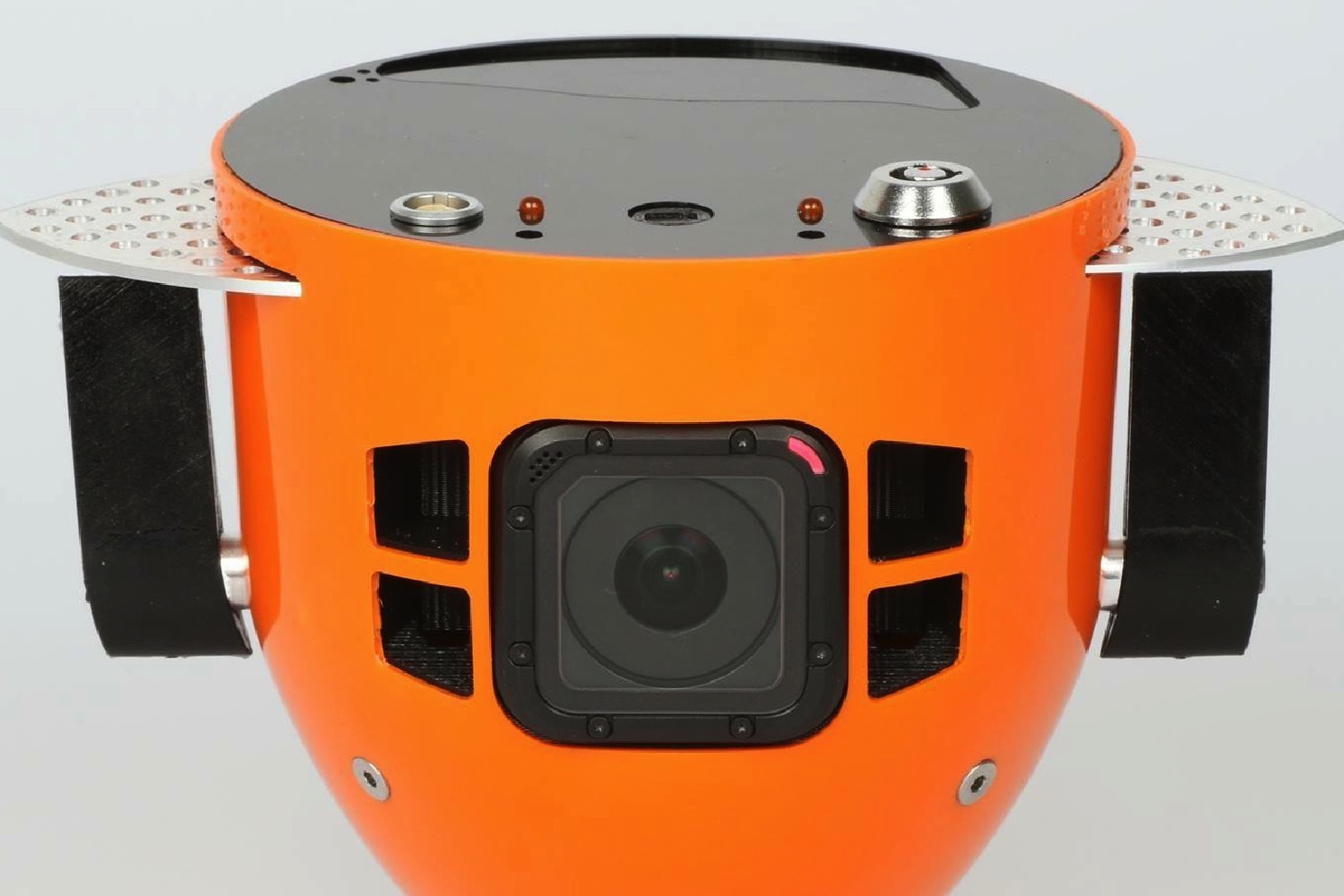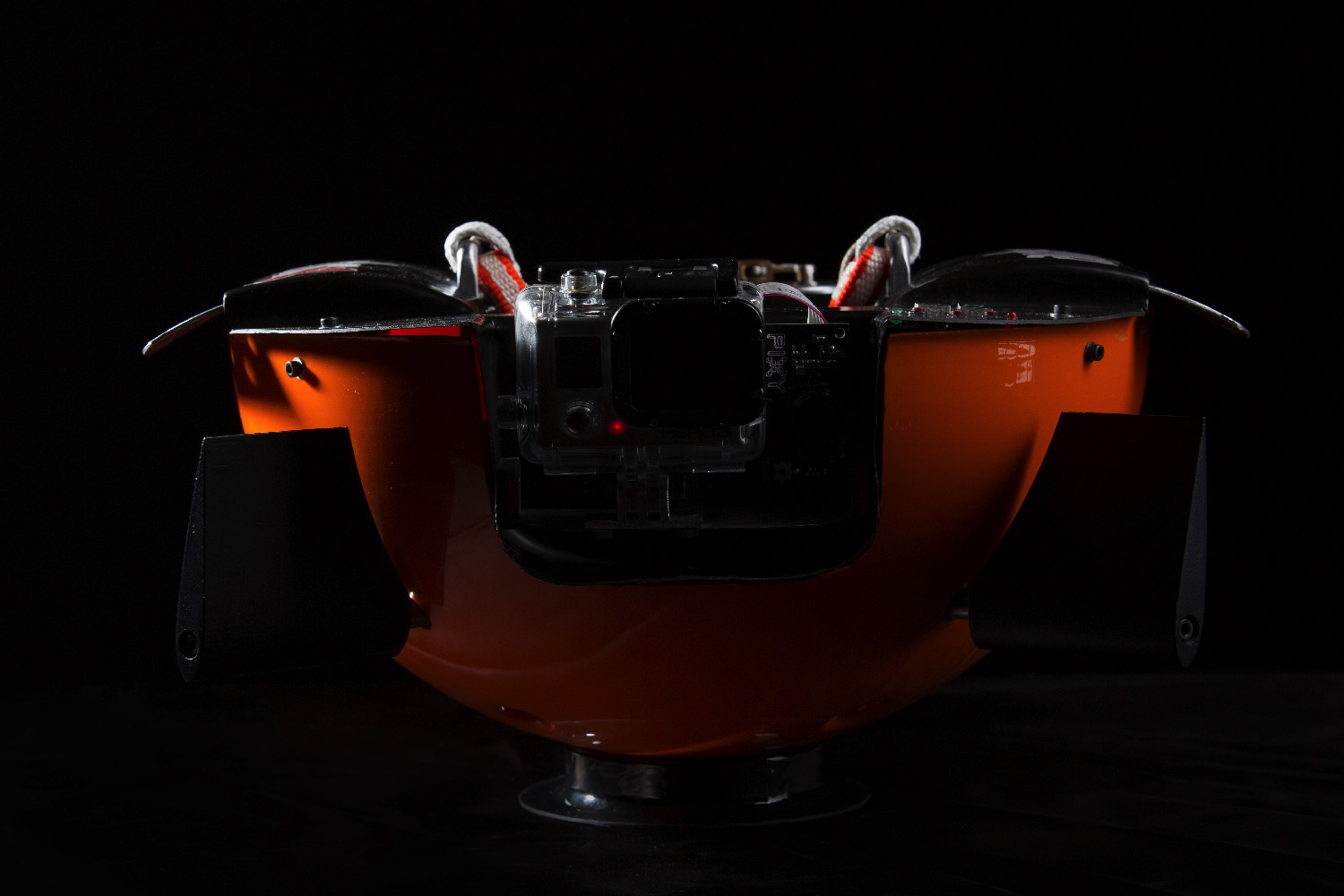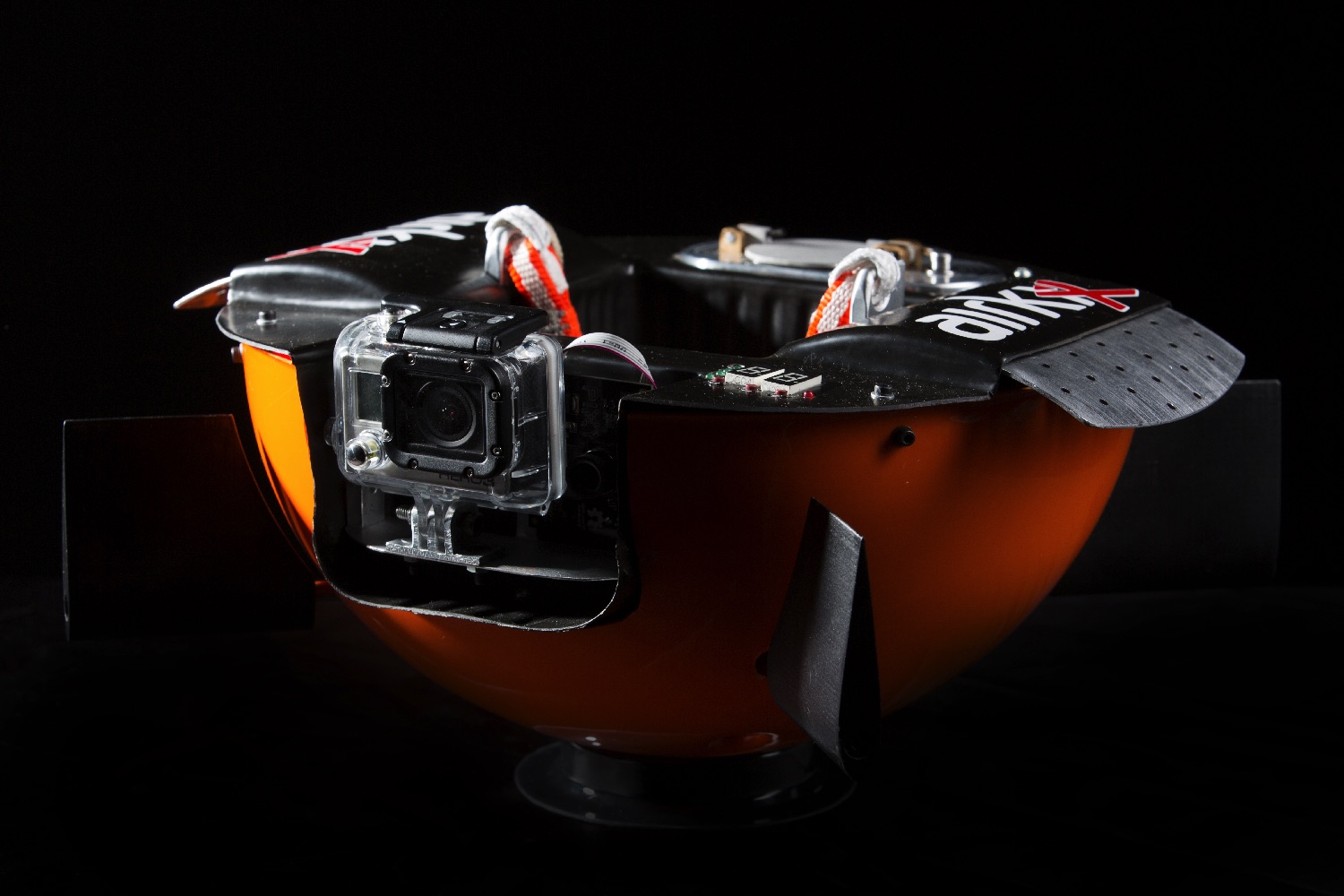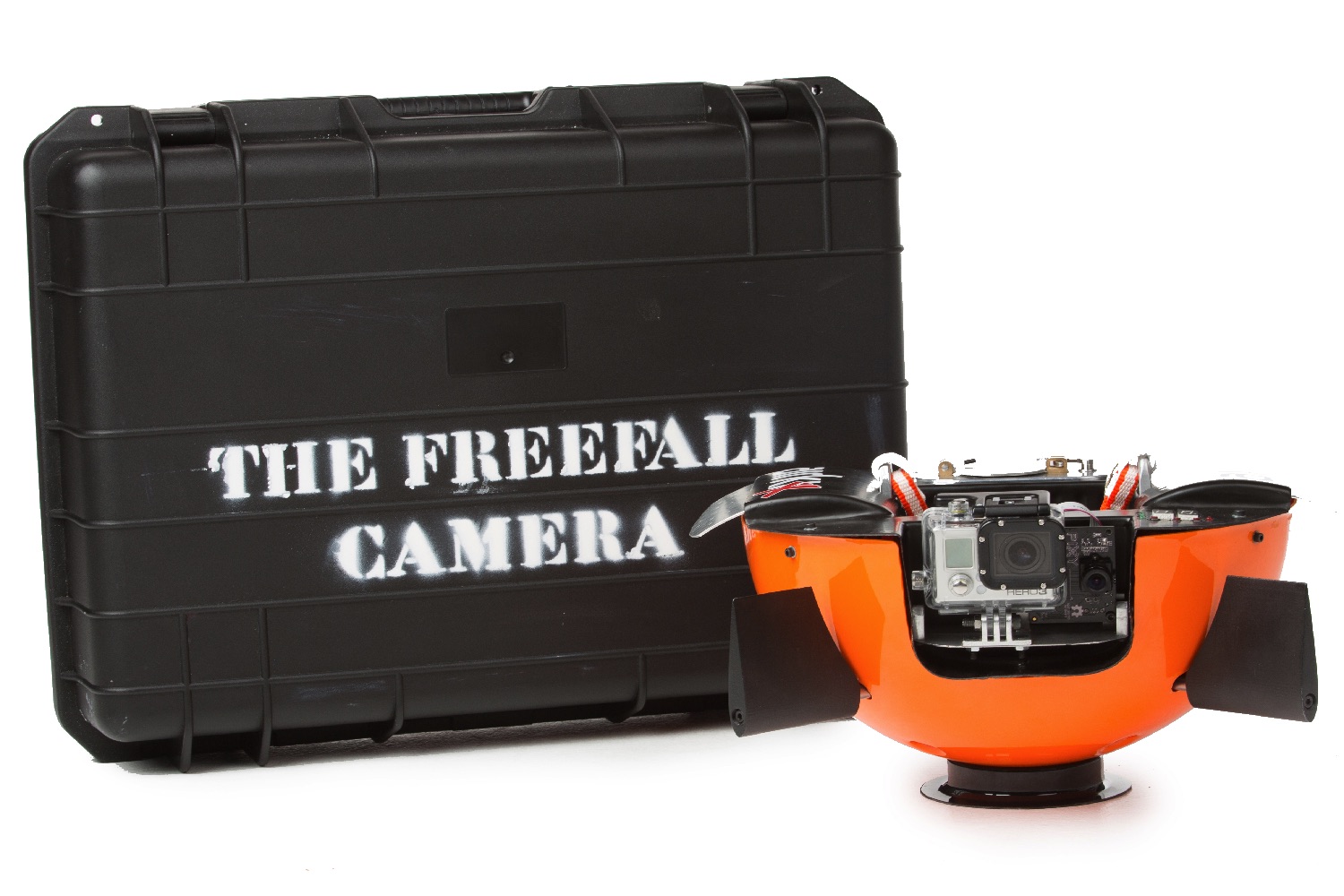“Sport skydiving relies on video footage for training and competing,” David Alatorre Troncoso, one of the researchers who developed the robot camera, told Digital Trends. “Currently, the only way to get a video of your jump is to ask a skydiving videographer to follow you wearing a camera helmet. Other extreme sports are experimenting with drones to capture the action remotely and, as a skydiving mechanical engineering student, I decided to make this my undergraduate project. While the aim was never to replicate the skill and artistic experience of a professional videographer, I hoped to explore an alternative and open up more options within the sport.”
Troncoso was joined on the creation of the Freefall Camera by fellow engineer-skydivers Pete Storey, Tom Shorten, and Tom Dryden. What they built was a robotic platform which can move through the air, controlling its terminal velocity like a skydiver. The robot moves using four ailerons and adjusts its velocity by changing its surface area to create more drag. To use it, a skydiver jumps out of a plane holding the robot and then releases it. Sensors aboard the robot then allow it to visually track the skydiver and point the camera in the right direction. After the skydive, the robot can deploy a parachute and steer to reach a predefined landing area.
So how do you get your hands on this awesome creation then? Unfortunately, that’s the bad news. “We get this question a lot,” Troncoso said. “The short answer is [that it’s not for sale] right now. Aviation regulators for most of the world’s airspace are very clear about dropping things from planes, and the consensus is that it’s a terrible idea and nobody should do it. Skydivers are one of a few exceptions to this rule! However, with the recent explosion in popularity of drones, aviation regulations are beginning to change and adapt. Only time will tell whether these changes end up favoring or holding back autonomous craft like the freefall camera.”
In other words, keep watching the skies!
